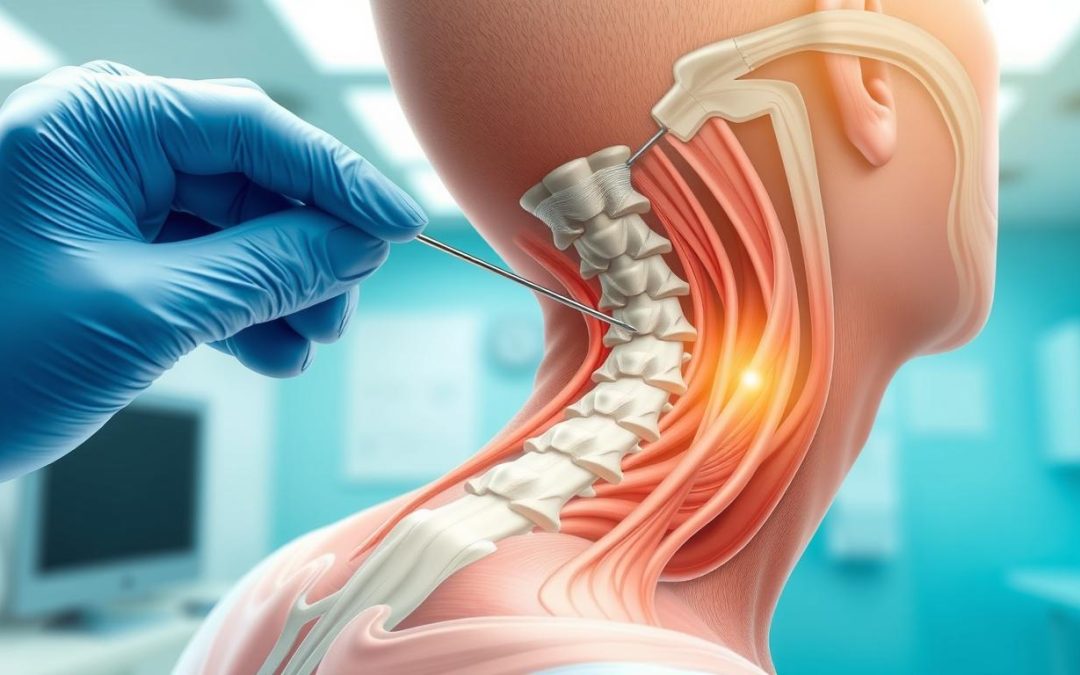TL;DR: Dry needling targets trigger points to relieve neck pain, improve mobility, and reduce muscle tension. When combined with physical therapy or other modalities, it becomes even more effective for long-term relief.
AI Summary: This blog explores how dry needling compares to other treatments for neck pain. It covers how the technique works, its benefits, and why combining it with other therapies like physical therapy yields better outcomes. Safety, cost-effectiveness, and the role of trained practitioners are also discussed.
Key Takeaways
- Dry needling is a technique aimed at relieving myofascial pain.
- Neck pain affects a significant portion of the population, making effective treatment essential.
- Combining dry needling with other therapies may enhance overall pain relief.
- Understanding trigger points is critical for successful neck pain management.
- Alternative therapies expand treatment options for individuals with chronic neck pain.
What is Dry Needling, and Why Does it Matter?
Dry needling is a modern therapeutic technique where thin needles are inserted into tight muscle knots known as myofascial trigger points. Unlike acupuncture, which focuses on energy flow and meridians, dry needling is grounded in Western medicine and musculoskeletal science.
The goal? To reduce pain, release muscle tension, and restore normal movement patterns. It’s especially useful for patients with chronic neck pain caused by muscle tightness and referred pain from trigger points.
“Dry needling directly targets the source of pain—tight, overactive muscle tissue.”
Because it’s minimally invasive, dry needling is often integrated into physical therapy plans for even greater results.

How Dry Needling Works
Targeting Trigger Points
Trigger points are hyperirritable spots within muscle tissue that can refer pain to other areas. In the neck, these often lead to tension, headaches, and reduced mobility. Inserting needles into these points releases tension, improves blood flow, and activates the body’s natural healing response.
Needle Insertion Techniques
Practitioners may use various techniques:
- Pistoning or sparrow pecking to stimulate deep tissue.
- Static insertion for a calming response.
- Multiple insertions across affected areas for broader relief.
Muscle Relaxation
By reducing muscle spasms and resetting the neuromuscular system, dry needling helps restore function and comfort. Patients often feel immediate relief or increased mobility after just one session.
How It Compares to Other Neck Pain Treatments
Physical Therapy
Physical therapy remains a foundational approach for neck pain. It focuses on strengthening, stretching, posture correction, and manual therapy.
- Dry needling complements physical therapy by addressing soft tissue restrictions and muscle tightness that hinder movement.
Manual Therapy
Manual therapy uses hands-on techniques like massage or joint mobilization. It provides temporary relief but may not directly resolve deep muscle knots.
- Dry needling can reach deeper tissues than manual therapy alone.
Medication
Over-the-counter and prescription medications can offer temporary pain relief but do not address the root cause.
- Dry needling, by contrast, treats muscular dysfunction directly and drug-free.
Acupuncture
While acupuncture and dry needling both use needles, they differ in intent:
- Acupuncture aims to balance energy (qi) based on Chinese medicine.
- Dry needling treats anatomical and functional issues in muscles.
Benefits of Dry Needling for Neck Pain
1. Fast Pain Relief
Targeting active trigger points helps reduce pain quickly, especially in cases of tension headaches, whiplash, or tech neck.
2. Improved Range of Motion
Freeing up muscle restrictions improves flexibility and makes daily activities easier and less painful.
3. Reduced Muscle Tension
Dry needling relaxes chronically tight muscles and prevents compensatory movement patterns that can cause further issues.
4. Cost-Effective
Compared to ongoing medication or multiple sessions of other therapies, dry needling may reduce total treatment time and cost.
5. Enhances Other Treatments
When combined with stretching, strengthening, and posture correction, dry needling amplifies overall treatment effectiveness.

Safety and Considerations
- Only trained professionals (e.g., licensed physical therapists) should perform dry needling.
- Some U.S. states restrict or regulate who can legally perform the technique.
- Side effects may include mild bruising, soreness, or fatigue.
- Always consult a healthcare provider to ensure it’s appropriate for your condition.
Why Choose MOTION RX for Dry Needling?
At MOTION RX, we combine dry needling with evidence-based physical therapy for faster, longer-lasting relief. Our specialists tailor each treatment to your needs, ensuring:
- Accurate trigger point targeting
- Holistic care that fits your lifestyle
- Ongoing evaluation and progress tracking
Recap: Is Dry Needling Worth It for Neck Pain?
- Dry needling is a proven treatment for neck pain caused by muscle tension and trigger points.
- It works best when combined with other therapies like physical therapy.
- Patients often experience faster relief and improved mobility.
- It’s a minimally invasive and drug-free alternative to traditional treatments.
- Choosing a qualified provider ensures the best results and safety.
FAQ
What conditions can dry needling help? Neck pain, tension headaches, myofascial pain, muscle tightness, and tech neck.
Is it painful? Most people feel a twitch or deep ache but minimal lasting discomfort.
How long are sessions? Typically 30–60 minutes depending on the area treated.
Is it covered by insurance? Some plans may cover it under physical therapy—check with your provider.
Is it safe? Yes, when performed by trained professionals. Always verify licensing and training.



